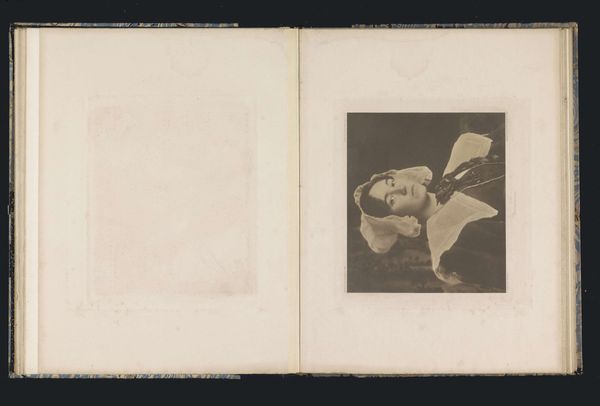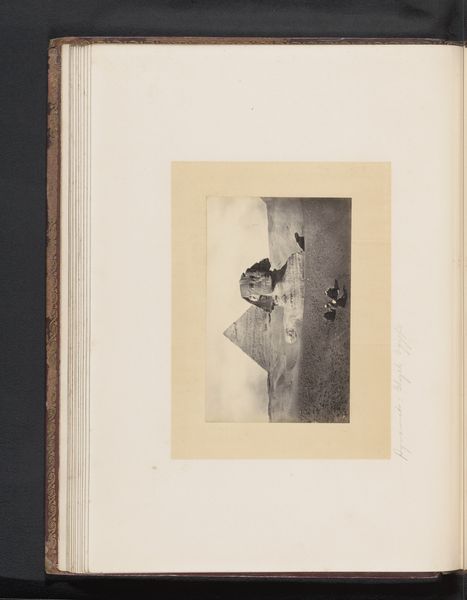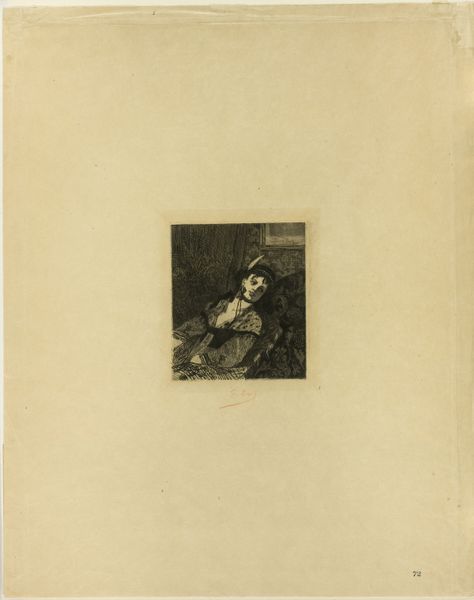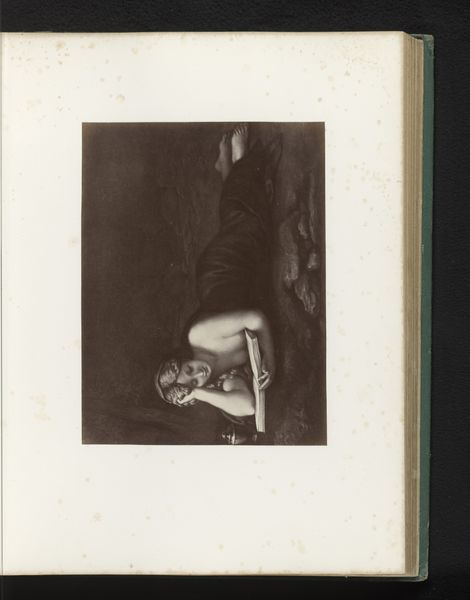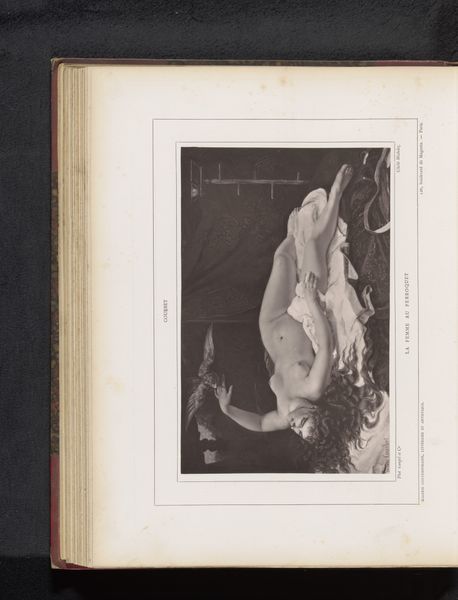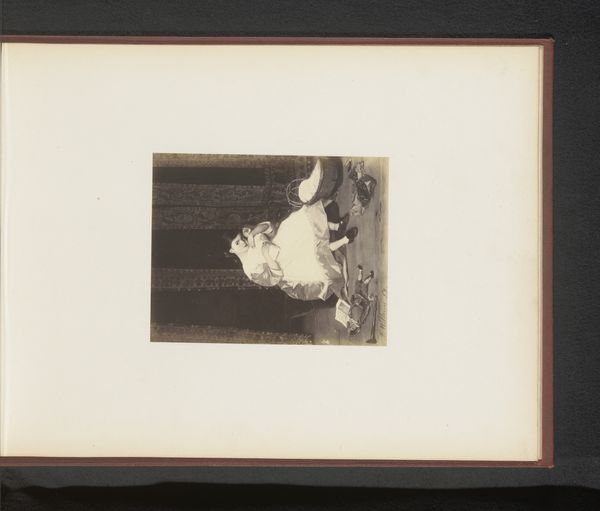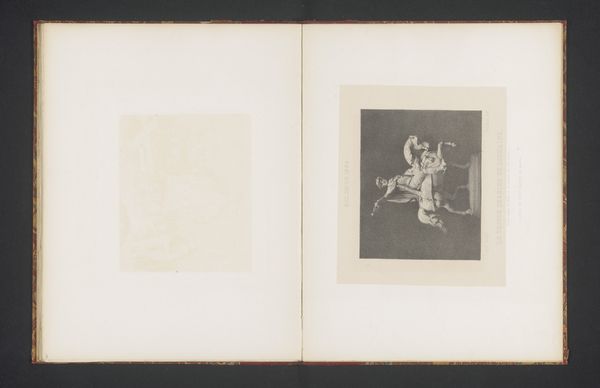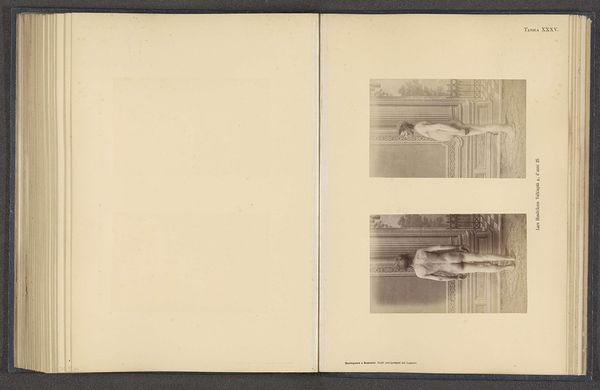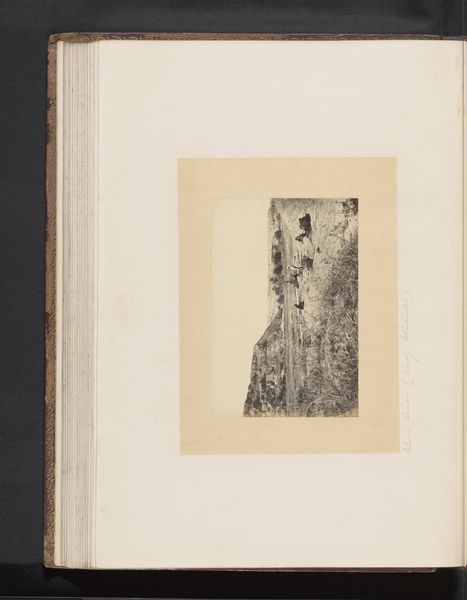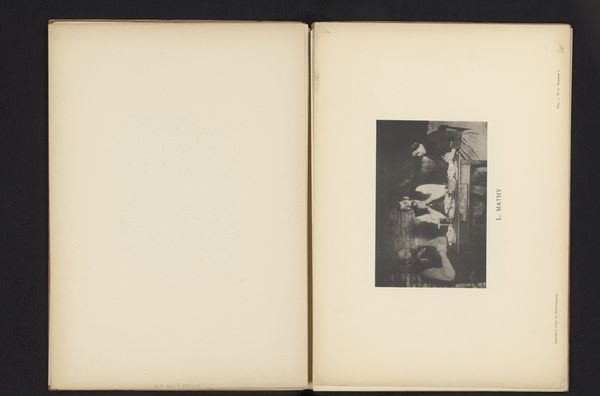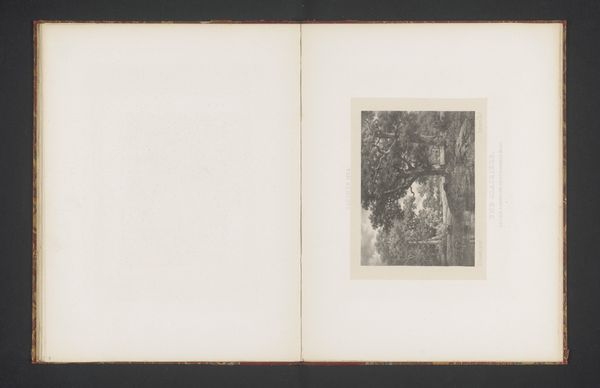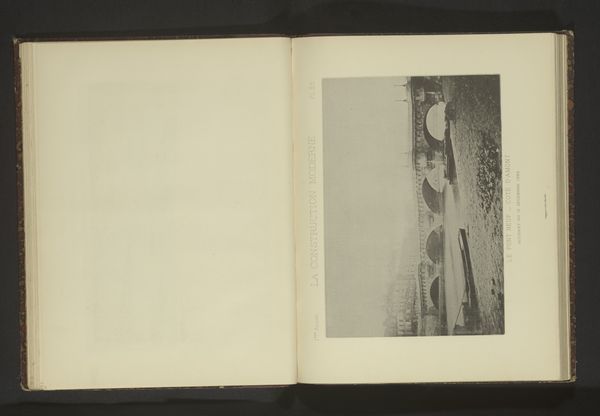
Twee belichtingsstudies, met daarop afgebeeld een portret van een onbekende jonge vrouw achter een balustrade before 1866
0:00
0:00
photography, gelatin-silver-print, albumen-print
#
portrait
#
photography
#
coloured pencil
#
gelatin-silver-print
#
albumen-print
Dimensions: height 98 mm, width 141 mm
Copyright: Rijks Museum: Open Domain
Editor: This photograph, "Twee belichtingsstudies, met daarop afgebeeld een portret van een onbekende jonge vrouw achter een balustrade," was created before 1866 by W.C. North. It's a gelatin-silver print, actually two prints side by side in an album page, portraying the same young woman behind a balustrade. What immediately strikes me is the doubled image. How do you interpret that repetition? Curator: That doubling really focuses attention, doesn’t it? Before 1866, photography was still relatively new, and portraiture especially so. The creation of two distinct images allows for a focus on representation. Photography, even then, was often read as inherently objective. This begs the question: objective for whom, and by whose standards? How might a young woman’s perceived respectability or social standing be influenced, or even determined, by how she's framed in these portraits? Editor: That's fascinating. So, you're seeing this piece as not just about capturing a likeness, but also about social commentary? Curator: Absolutely. Consider the staging. She’s behind a balustrade. What does that signify? Is it a barrier, a frame, or something else entirely? And the lighting, different in each study... Is it illuminating her, or obscuring certain aspects of her identity? Early photography, while seemingly accessible, was steeped in conventions that reinforced social hierarchies, particularly gender. Do you think the two lighting variations represent an exploration of the complex visual codes of that era? Editor: I hadn’t considered the layers of social messaging embedded within seemingly simple exposure studies. The variations invite speculation about the social forces shaping female representation. Curator: Precisely. Even these early "studies" are laden with meaning. It is important to engage with not just the image but what it represents and obscures. Editor: Thank you! That reframes my perspective entirely and inspires a new reading of photographic portraits from this period. Curator: My pleasure! It is by analyzing these seemingly straightforward works, understanding their context, and dissecting the intended messages, we can shed light on a more comprehensive history.
Comments
No comments
Be the first to comment and join the conversation on the ultimate creative platform.

